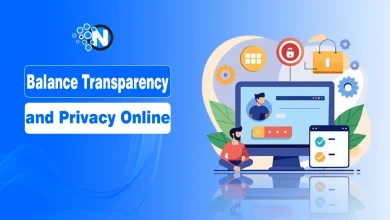SEO Best Practices for Cybersecurity Content Marketing

Trust is everything in cybersecurity. Decision-makers like CISOs, IT managers, and small business owners face constant pressure to protect their organizations from increasingly complex threats. In cybersecurity content marketing, your job isn’t just to sell a product–it’s to provide the right information at the right time to the right people. That’s where Search engine optimization (SEO) comes into play.
SEO means more than climbing to the top of the search engine rankings; it’s about building authority, engaging your audience, and establishing trust in a field where credibility can make or break a brand. Cybersecurity has its hurdles: technical jargon, high-stakes topics, and rapidly evolving threats make creating accessible yet authoritative content a delicate balance.
To succeed, it’s important to create an SEO strategy for cybersecurity content marketing that not only reaches your audience but resonates with their specific security challenges and pain points. Whether you’re addressing an SMB owner concerned about phishing or a CISO looking for zero-trust solutions, understanding how to align content with their needs and delivering it in an optimized manner can transform your visibility and authority in the market.
In this blog post, I have listed some of the best SEO practices to fuel your cybersecurity content marketing strategy.
Let’s start!
SEO Tips for Cybersecurity Content Marketing

Cybersecurity Keyword Research Strategies
Effective SEO begins with targeted keyword research. Identify the right keywords and you can reach your intended audience directly, address their immediate concerns, and provide value at every stage of their buying journey. Here’s how to start:
Use Keyword Research Tools
Tools like SEMrush and Google Keyword Planner can help you identify keywords with a healthy balance of search volume and competition. In cybersecurity, where niche topics such as “post-quantum cryptography” or “SASE implementation strategies” are trending, these tools allow you to pinpoint the terms that resonate with your audience while avoiding overly saturated phrases.
Focus on Long-Tail Keywords
Generic terms like “cybersecurity” or “phishing prevention” may seem appealing, but they’re too competitive to drive meaningful traffic for the average organization. Instead, target long-tail keywords that address specific problems or scenarios relevant to your audience. Instead of “phishing prevention,” aim for “how to prevent phishing attacks for SMBs.” Replace “cybersecurity tools” with “top affordable cybersecurity tools for small businesses.”
These longer phrases are more likely to align with user intent and capture traffic from niche, highly motivated audiences.
Address Search Intent
Understanding the why behind a search is critical to tailoring your content to user needs. Start with these three primary search intents:
- Informational: Users looking for education, such as “What is ransomware?” or “benefits of zero-trust architecture”
- Navigational: Users seeking specific solutions, such as “best cybersecurity tools for enterprises”
- Transactional: Users ready to take action, such as “buy endpoint protection software”
Crafting content that aligns with each intent provides a map for users to follow along the buyer’s journey, from awareness to decision-making. Understanding your audience makes for better, more successful cybersecurity marketing: a library of engaging, relevant content addressing customer pain points.
Creating High-Value Content
Attracting clicks is only part of the battle. Cybersecurity marketing content must also educate, build trust, and offer actionable insights. By focusing on high-value, engaging content, you can position your brand as a thought leader while addressing the unique challenges of your audience.
For example, cybersecurity audiences often seek guidance to navigate complex issues. As a result, high-quality educational resources like whitepapers, blogs, and webinars can serve as foundational pillars of your strategy and help you address pressing questions, demonstrate expertise, and empower your audience. Plus, these resources deliver value beyond a single interaction; once one of these pieces is created, it can be cut into smaller bites for deeper and longer-lasting engagement with your brand.
Pro tip: The days of fear-driven messaging in cybersecurity are over. Avoid FUD in cybersecurity marketing by creating transparent narratives that prioritize solutions over fear. Replace warnings with proactive advice: instead of “A cyberattack could devastate your business!,” try “Implement these three steps today to strengthen your defenses against ransomware.” Or, share success stories highlighting organizations who have successfully navigated cybersecurity challenges using your solutions for real-world examples your buyers can follow.
High-value, detailed content is a cornerstone of effective SEO, and it’s also key to establishing long-term trust in the cybersecurity industry. Shifting from fear to empowerment by prioritizing educational resources with proactive advice is one great way to build credibility and create meaningful connections with your audience without overwhelming them.
Optimize Technical SEO for Cybersecurity Websites
A well-optimized website not only ranks well but also delivers a seamless, trustworthy experience to users. Your website’s performance directly impacts both search engine rankings and user trust—cybersecurity audiences expect fast, intuitive access to your content. Focus on these areas:
- Site speed: Optimize images, enable caching, and reduce server response times for quick loading. Slow sites risk losing visitors and ranking penalties.
- Mobile responsiveness: Your site should deliver an equally seamless experience to smaller screens as it does for desktops. Test for responsive layouts and intuitive navigation
- HTTPS: Your cybersecurity site should be secure. Denoting encryption with the https:// not only protects user data but demonstrates your commitment to best practices (which search engines reward with higher rankings).
- Meta titles and descriptions: incorporate target keywords into concise meta tags that encourage clicks. Think attention-grabbing headlines: “Top Cybersecurity Tools for SMBs—Protect your business today.”
- Schema markup: Use structured data to provide search engines with additional context for the content you produce. Schema markup can define resources like whitepapers as such, enhancing visibility in search results with rich snippets.
Cybersecurity topics are complex, but optimized content should be accessible to a diverse audience, from tech-savvy professionals to business executives with limited technical experience. Balance technical accuracy with clarity so you’re writing for humans first, search engines second, and use clear headings, bullet points, and internal links to guide users and improve search engine rankings. Accessible content helps readers and bots find your content effortlessly.
Level Up Your SEO Strategy
A robust cybersecurity content marketing strategy combines authoritative content and optimizing distribution. Ready for more? Consider these integrated approaches to take your cybersecurity content to the next level.
Build Authority Through Backlinks
Backlinks from trusted sources signal credibility and value to search engines. Focus on the development of high-quality resources from original research to attract backlinks organically, or partner with industry leaders to co-author whitepapers and guest blogs to expand your reach. Use tools like Moz to identify and disavow links that harm your SEO performance.
Measure, Adapt, and Improve
SEO success is an ongoing process of measurement and iteration. Begin as you mean to go on by implementing tracking for important metrics (click-through rates, organic traffic growth, bounce rates) and optimizing underperforming content to increase its relevance. We suggest scheduling regular content audits to identify material that can be updated with low effort as a supplement to your high-value original content.
Expand Distribution Channels
Once you have the content, it’s time to amplify it! Share blogs, infographics, and guides on social media like LinkedIn to engage targeted audiences. If you have the budget, consider an ad partner to promote high-value assets and extend their reach to interested segments. Stay updated, monitor trending cybersecurity topics and join the discussion if there’s an opportunity to showcase your expertise.
Final Thoughts
Remember, the goal of SEO isn’t just to rank high on search engines, it’s to connect with your audience in meaningful ways. Combine keyword strategies, high-value content, technical optimization, and thoughtful distribution to build a robust online presence and user trust in your brand. In a field where trust is everything, a strategic SEO approach is your key to educating, engaging, and empowering your audience while you rise above the competition (and their domain authority).




